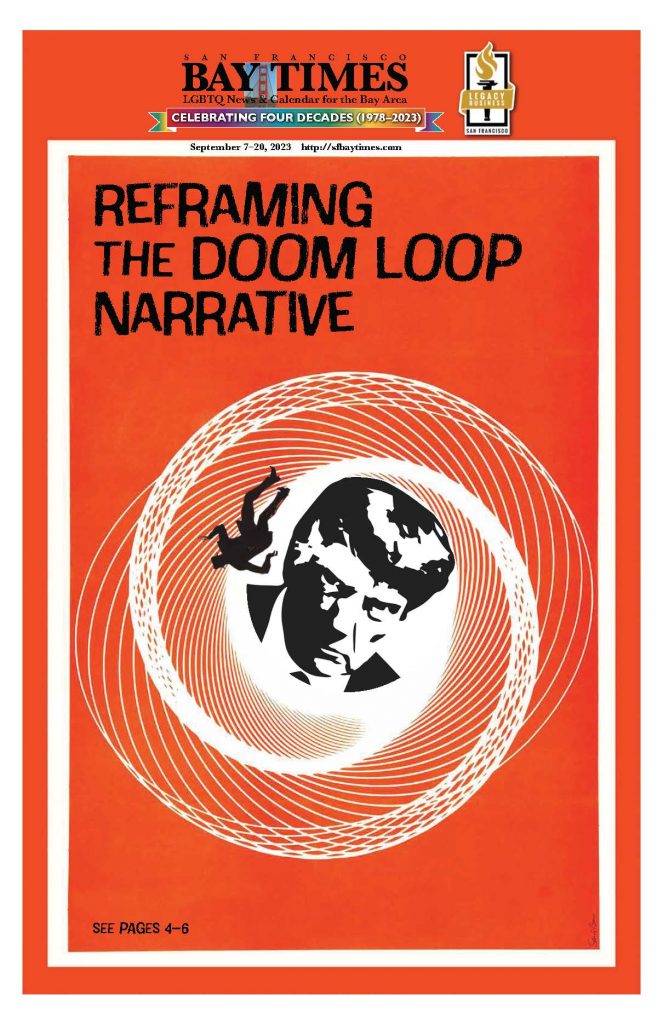
“San Francisco’s changed. The things that spell San Francisco to me are disappearing fast.”
John “Scottie” Ferguson, the character played by Jimmy Stewart in Vertigo, was told this by “Gavin Elster” during the 1958 film. Even then, many people were bemoaning the loss of what they felt was once great—the 1950s version of MAGA.
San Francisco City Guides now offers a “Boom & Bust” tour, which has the description: “Since the days of the Gold Rush, San Francisco has had the reputation of being a city of booms and busts. This has been a place where you could strike it rich, but it’s also been a place where you could lose it all. On this tour you will follow the development of San Francisco from a remote trading outpost to a global hub for technology and finance. Along the way you’ll hear stories about bold ventures and ill-fated schemes, banking panics and stock market antics, all as we walk through San Francisco’s financial district.” http://tinyurl.com/2p8xban8
It is the world of finance that gave us the phrase “doom loop” that we now hear so often. Popularized in the 2001 business management book Good to Great by Jim Collins, the term, according to Investopedia, “describes a situation in which one negative economic condition creates a second negative condition, which in turn creates a third negative condition or reinforces the first, resulting in a self-reinforcing downward spiral.”

Looking up and down the streets of San Francisco, as Scottie did in Vertigo (albeit in a Hollywood stylized version of the city), it is not hard to see evidence of the doom loop or bust side of things: open air drug markets, homelessness, crime, smashed car windows, refuse, and more. The problems spill over to other parts of the Bay Area. Just a few days ago, for example, a member of our team in the East Bay went to a favorite neighborhood store and learned it had recently been ransacked to the point of near destruction. Driving out of the area, she got stuck in heavy traffic due to yet another shooting on Interstate 580 that shut down all westbound lanes. Upon returning home, she learned that a neighbor’s house had just been burglarized, with the coordinated team of thieves all caught on security cameras robbing the home and showing no fear of arrest. The police did show up—several hours later.
Earlier this year, the San Francisco Chronicle ran the story “Cities are struggling. San Francisco could be in for the biggest ‘doom loop’ of all” (http://tinyurl.com/2a8hy2s7). It presents various scenarios, but many experts remain optimistic. As Ted Egan, the Chief Economist of the City and County of San Francisco, said: “We need an element of modesty here. In San Francisco, there’s a tradition of grand ambitions. And I think we need, rather than promoting a grand vision, we should … let nature take its course while not going off the rails.”
Former President Donald Trump, himself in a doom loop of criminal charges, seems to love to go off the rails. He animatedly spins one narrative after another, from citizenship conspiracy theories surrounding fellow former President Barack Obama to relentless attacks on Hillary Clinton to claims of election fraud. The mob of Trump supporters who attacked the Capitol Building on January 6, 2021, believed the spin and both literally and figuratively went off the rails.
When Scottie found himself spinning out of control, he elected over time not to believe the false narratives after being led astray. The ending of the movie, though, forces viewers to draw their own conclusions about the situation. So it is that the state of San Francisco now remains an open question. We can all agree, however, that it is better to exist in the “optimism spiral”—a phrase used by Donna Sachet at the end of Sunday’s a Drag—than to get caught up in the vertigo-inducing doom loop.
Cover Story
Published on September 7, 2023
Recent Comments